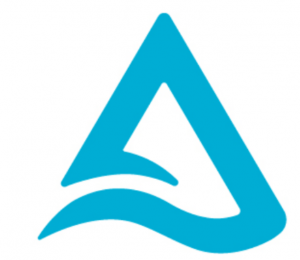Introduction
Delta Lake is an open-source storage layer that brings data lakes to the world of Apache Spark. Delta Lakes provides an ACID transaction–compliant and cloud–native platform on top of cloud object stores such as Amazon S3, Microsoft Azure Storage, and Google Cloud Storage.
It enables organizations to quickly and reliably build data lakes on cloud object stores. It provides an intuitive, cloud–native platform for data engineers, scientists, and analysts to explore, discover, and build data-driven applications collaboratively.
Delta Lakes makes it easy to store and query data in a format compatible with the open-source Lakehouse data model. It provides a comprehensive set of features, including data versioning, audit logging, and fine–grained access control. Let’s see what makes delta lakes so special. Let’s understand its features and working. So, let’s get started.
Features of Delta Lake
Delta lake was created by the original creators of Apache Spark and was designed to provide the benefits of both worlds: the transaction’s ability of databases with the horizontal scalability of data lakes.
- ACID Transactions: It provide ACID transactions to ensure data consistency on reads and writes. It also supports snapshot isolation for reads to ensure readers have a consistent data view.
- Schema Enforcement: It enforces schema on reads and writes. This ensures data quality and integrity by catching early issues such as type mismatches and missing fields.
- Versioning: It supports data versioning, which helps track the changes made to the data. This allows you to build reliable pipelines that make use of data.
- Time Travel: It supports rich data access by allowing users to query the data at any time. This helps in debugging and auditing the data pipelines.
- Scalability: It is designed to scale to petabytes of data. It supports parallel reads and writes by using Apache Spark.
- Open Source: It is an open-source project. It is available on GitHub and also supports other open-source technologies such as Apache Spark.
Now am sure most of you might be thinking that if delta lake is such a powerhouse packed with such features, then without any doubt, most companies might want to convert their data lake to delta lake.
Top 5 Reasons to Use Delta Lake
1. Scalable: It provides storage for large amounts of data and is highly scalable. It can easily handle batch and streaming data and can process data from multiple sources.
2. Cost-effective: It is cost–effective for both storage and processing. It is open source, making it free to use, and the underlying technology optimizes storage costs.
3. High performance: It provides high performance with low latency, allowing users to access data quickly and efficiently. 4. Data reliability: Delta Lake helps ensure data reliability by providing atomic transactions, which guarantee that changes are applied in an atomic manner and can be rolled back if needed.
5. Data governance: It provides tools for data governance, allowing users to track changes and manage data lineage. This helps to ensure data is consistent, secure, and compliant.
If you have an existing data lake and have considered the above reasons and want to transition to using Delta Lake, you can do so by following these steps:
Data Lake to Delta Lake- Understanding the Transition
1. Understand the existing data lake architecture:
The first step is to understand the existing data lake architecture. This will help to identify the existing data sources and their corresponding data sets and storage formats.
2. Evaluate the existing data lake architecture:
The next step is to evaluate the existing data lake architecture. This will help to identify the areas of improvement, scalability, and security.
3. Design the Delta Lake Architecture:
The next step is to design the Architecture. This will involve designing the data models, data pipelines and other components needed to deploy the Delta Lake.
4. Implement the Delta Lake Architecture:
The next step is to implement the Architecture. This will involve setting up the data lake, configuring data pipelines, and deploying the Delta Lake components.
5. Test the Delta Lake Architecture:
The next step is to test the Architecture. This will involve validating the data pipelines, data models, and other components of Delta Lake.
6. Migrate Data to Delta Lake:
The final step is to migrate the data from the existing data lake to Delta Lake. This will involve transforming the data, migrating it to the Delta Lake, and validating the data in the new data lake
Conclusion
In summary, DeltaLake is an open–source storage layer that provides reliable data management and unified analytics on data stored in data lakes. It enables organizations to manage their data lakes in a way that is secure, reliable, and compliant with regulations. It also provides scalability, ACID transactions, and support for multiple languages. Finally, it provides integration with cloud data warehouses and data lakes, as well as with Apache Spark and Apache Kafka.







